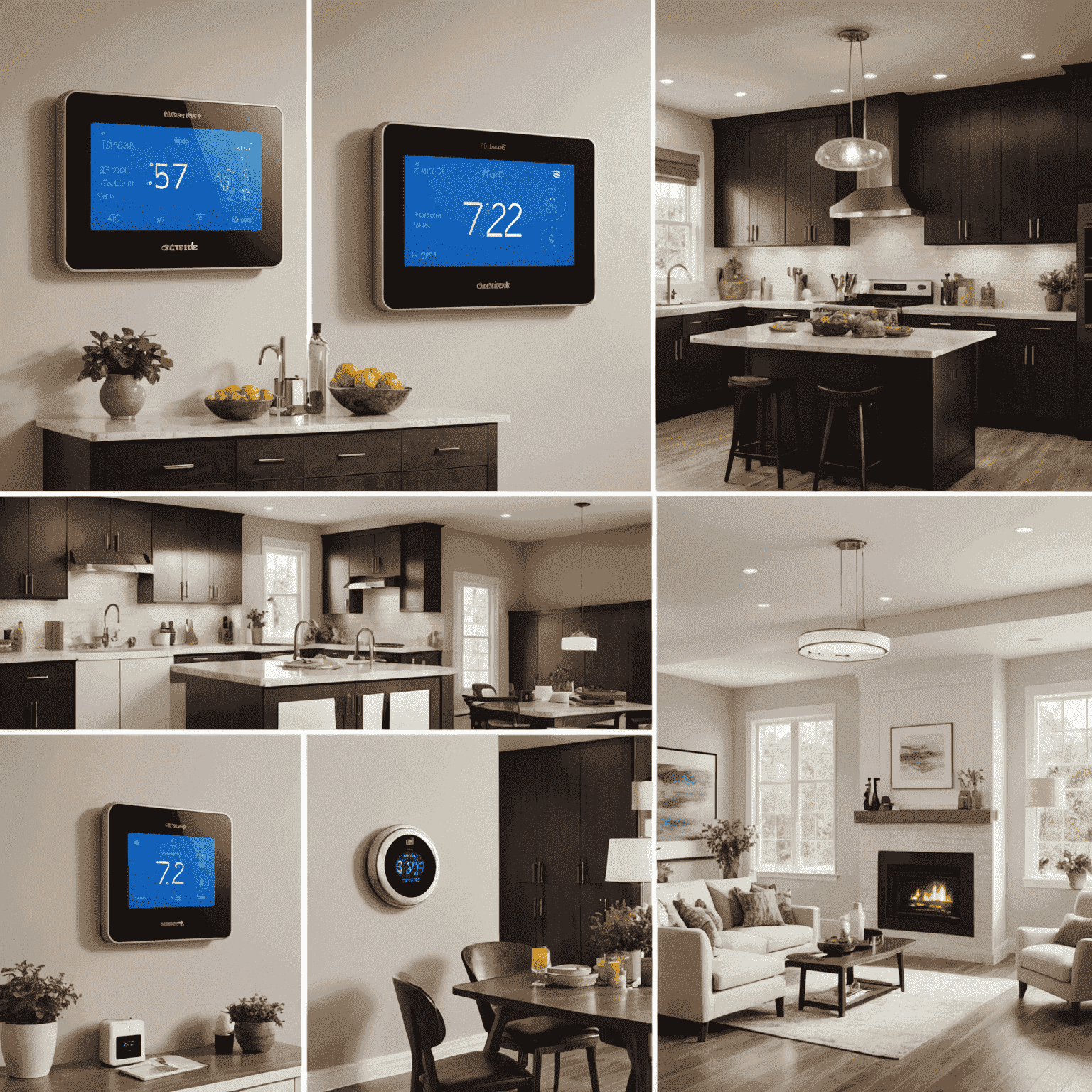Smart Home Energy Management Systems

In the era of sustainable living, smart home energy management systems are revolutionizing the way we consume and conserve energy. These innovative technologies not only optimize our energy usage but also seamlessly integrate with renewable energy sources, paving the way for more eco-friendly and cost-effective households.
Key Components of Smart Home Energy Management
1. Smart Thermostats
Smart thermostats are the cornerstone of energy-efficient homes. They learn your preferences and routines, automatically adjusting temperature settings to optimize comfort and energy savings. Some advanced models can even integrate with local weather forecasts to further fine-tune your home's climate control.
2. Energy Monitoring Systems
Real-time energy monitoring devices provide detailed insights into your home's energy consumption. By identifying energy-hungry appliances and peak usage times, these systems empower homeowners to make informed decisions about their energy use.
3. Smart Lighting
LED bulbs with smart controls allow for automated scheduling, dimming, and remote operation. This not only enhances convenience but can significantly reduce lighting-related energy consumption.

Integration with Renewable Energy Sources
Smart home energy management systems truly shine when integrated with renewable energy sources like solar panels or wind turbines. These systems can:
- Optimize the use of self-generated renewable energy
- Automatically switch between grid power and stored renewable energy based on availability and demand
- Provide insights into renewable energy production and consumption patterns
Solar Panel Integration
When connected to solar panels, smart systems can track solar energy production, manage battery storage, and even sell excess energy back to the grid when advantageous.
Battery Storage Solutions
Smart home batteries, like the Tesla Powerwall, store excess renewable energy for use during peak hours or power outages, further enhancing energy independence and efficiency.

Benefits of Smart Home Energy Management
- Reduced Energy Bills: By optimizing energy use and leveraging renewable sources, homeowners can see significant reductions in their energy costs.
- Enhanced Comfort: Automated systems ensure optimal temperature and lighting conditions without constant manual adjustments.
- Environmental Impact: Efficient energy use and integration with renewables lead to a reduced carbon footprint.
- Increased Home Value: Energy-efficient homes with smart technologies are increasingly attractive to potential buyers.
- Greater Energy Independence: Reliance on the grid is reduced, especially when combined with renewable energy sources.
Implementing Smart Home Energy Management
To get started with smart home energy management:
- Begin with a smart thermostat and energy monitoring system
- Gradually add smart lighting and appliance controls
- Consider integrating renewable energy sources like solar panels
- Explore battery storage options for enhanced energy independence
- Regularly review and adjust your system based on energy reports and changing needs
As we move towards a more sustainable future, smart home energy management systems offer a powerful tool for homeowners to take control of their energy consumption. By embracing these technologies, we can create homes that are not only more efficient and comfortable but also contribute to a greener planet.